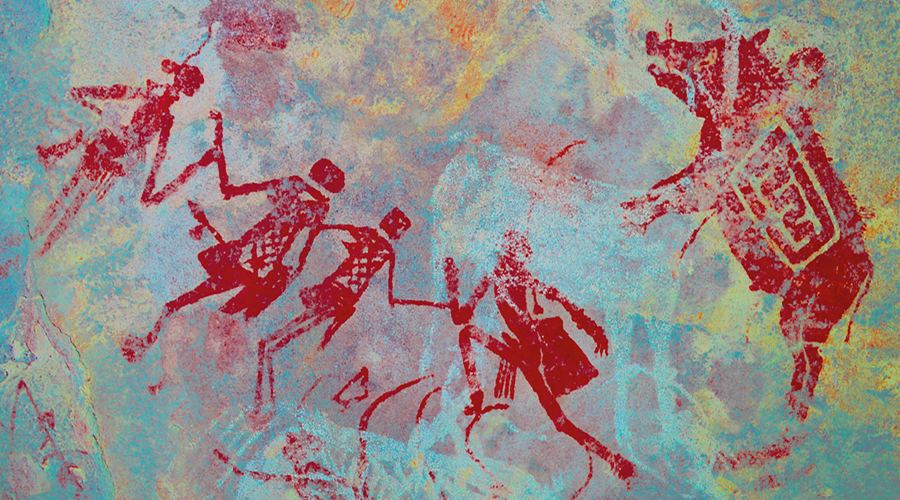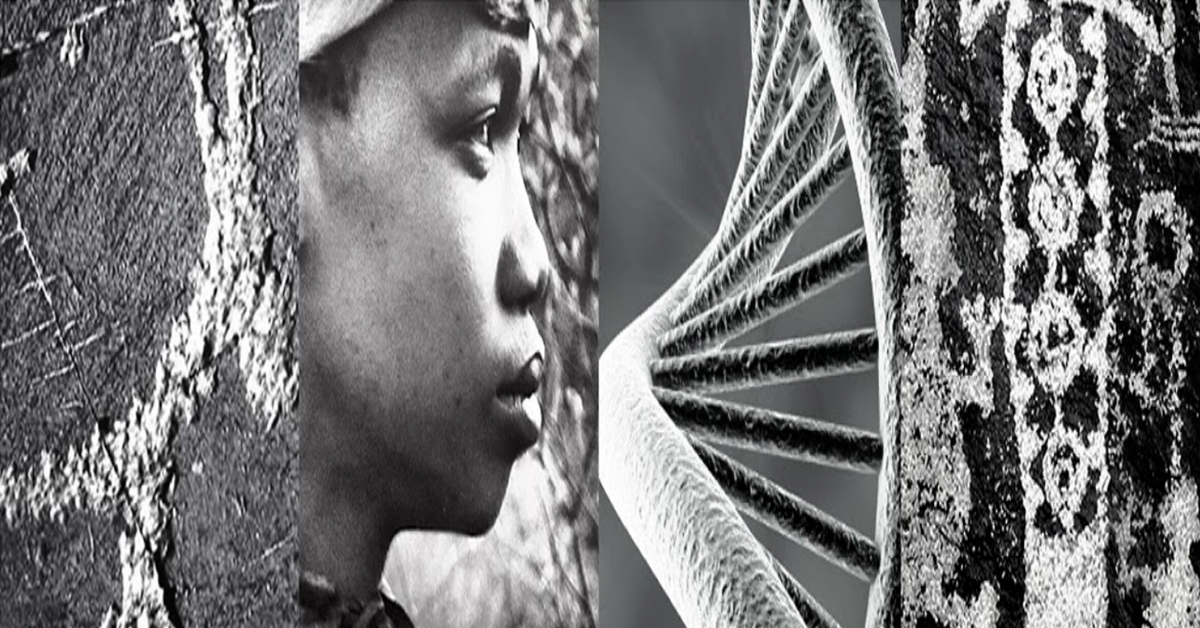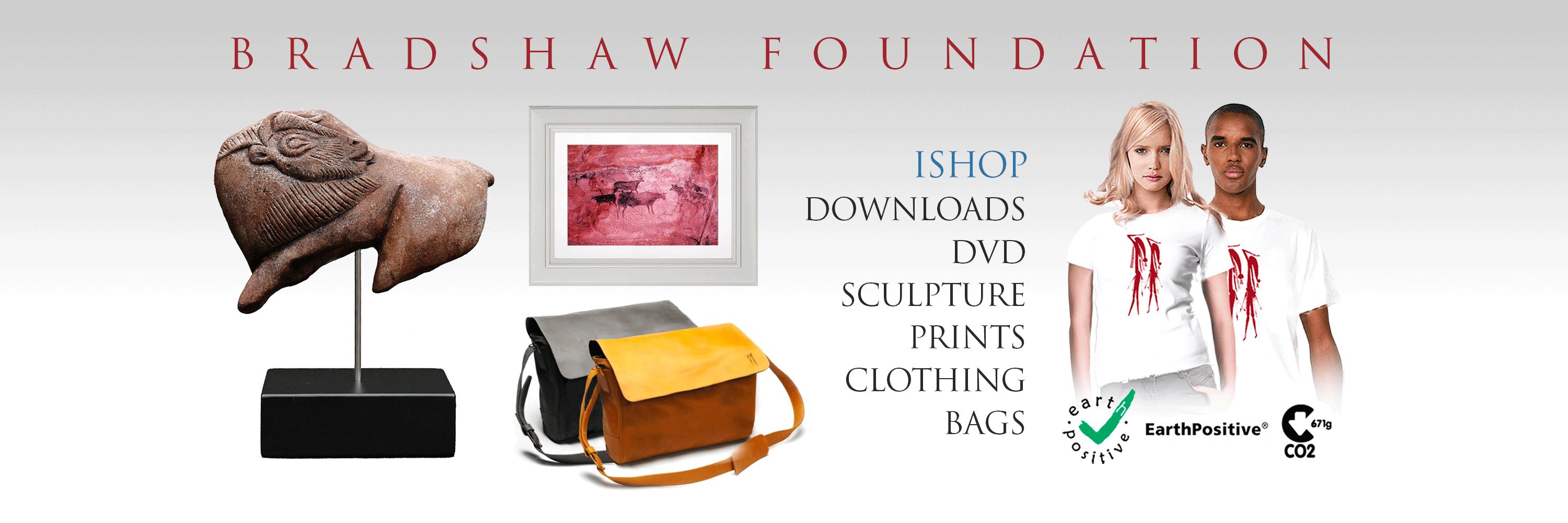


The Bradshaw Foundation will soon be releasing a new section that looks at the salient theories concerning rock art. This will aim to shed light on who the artists were, and why they created the art - paintings, drawings, engravings and sculptures. It will also aim to analyse rock art around the world over time, and consider universal similarities as well as specific geographical artistic and cultural signatures.
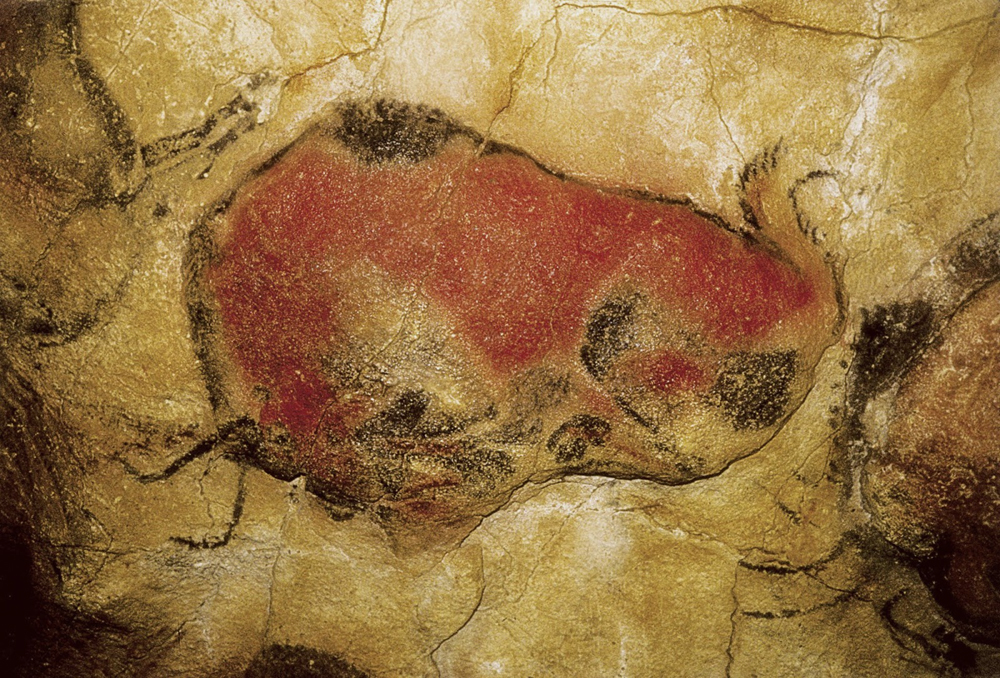
Bison painting. Altamira, Spain.
In 1879, a young girl named Maria was accompanying her father, Marcelino Sanz de Sautuola, while he was exploring a cave at Altamira in northern Spain. Looking up she exclaimed "Look Papa, oxen!"
The Cave of Altamira was the first cave in which prehistoric cave paintings were discovered. When the discovery was first made public in 1880, it led to a bitter public controversy between experts since many did not believe prehistoric man had the intellectual or religious capacity to produce any kind of artistic expression.
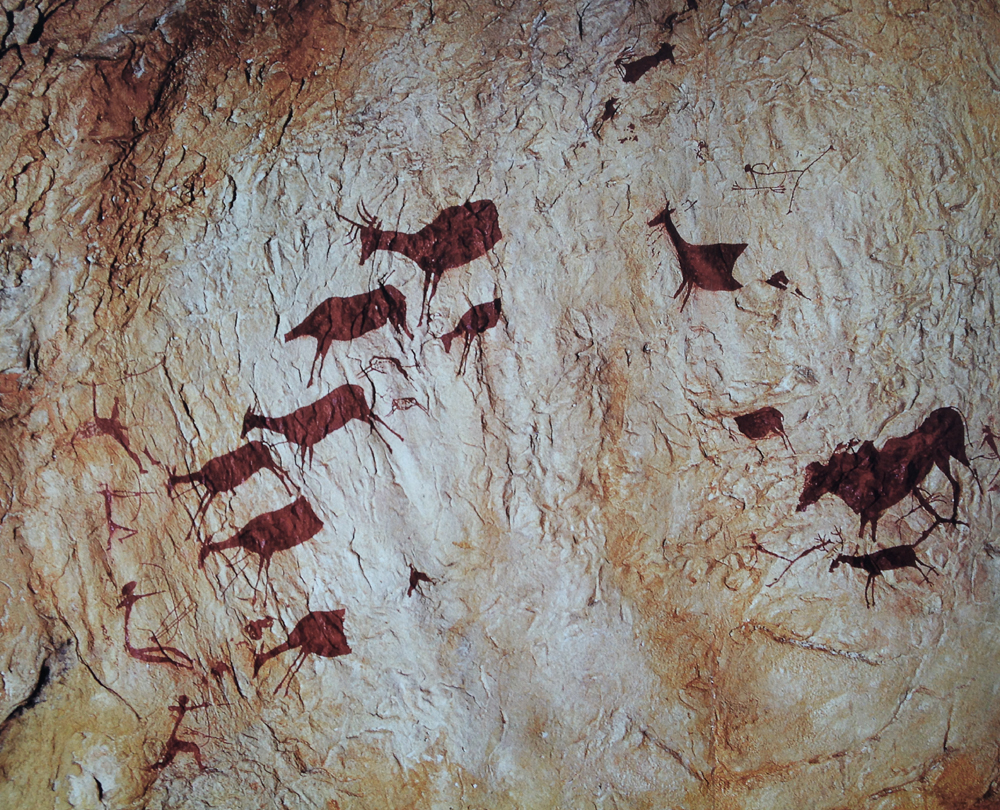
Deer hunting scene from the Cavalls Shelter, Valltorta, Spain (replica from the Valltorta Museum).
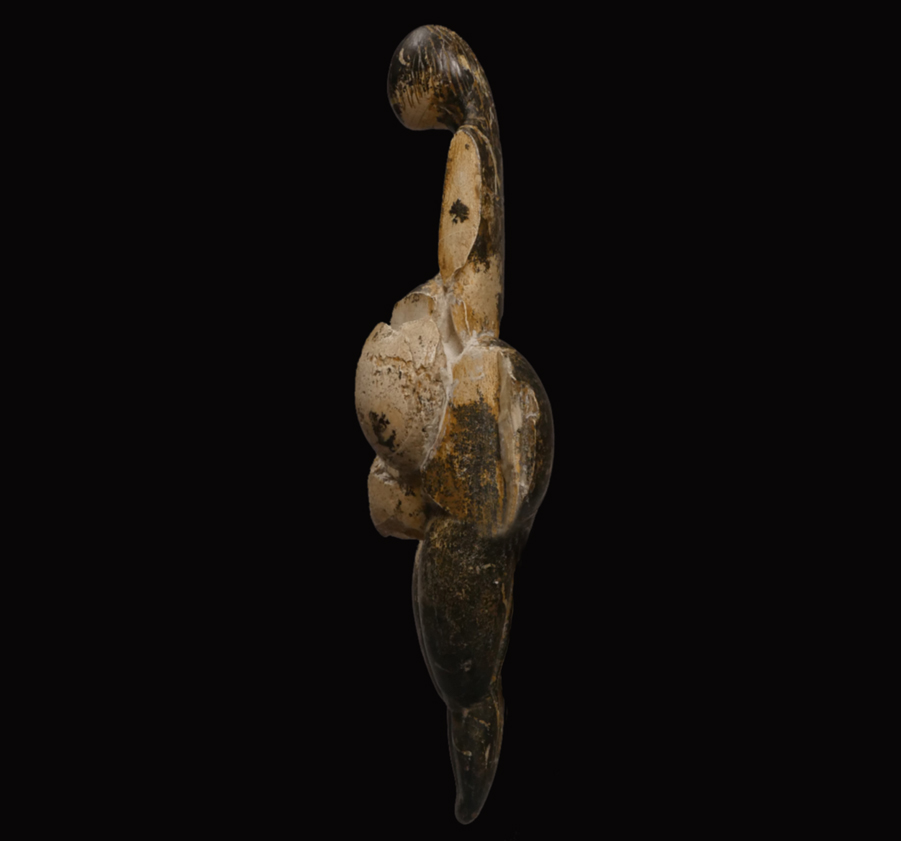
Lespugue figurine, Grottes de Rideaux, Lespugue, Haute-Garonne, France.
Was there a purpose behind the paintings in caves? Were there artistic traditions closely adhered to? Were the compositions and the colours carefully considered? Did the various techniques convey different meanings? Who sculpted the female figurines?
Could anyone paint an image in Chauvet cave?
What is this human impulse to create?
by Bradshaw Foundation
Monday 30 May 2022
by Bradshaw Foundation
Wednesday 19 January 2022
by Bradshaw Foundation
Thursday 06 January 2022
by Bradshaw Foundation
Monday 06 December 2021
by Bradshaw Foundation
Monday 29 November 2021
by Bradshaw Foundation
Monday 25 October 2021
by Bradshaw Foundation
Monday 12 July 2021
by Bradshaw Foundation
Monday 24 May 2021
by Bradshaw Foundation
Tuesday 20 April 2021
by Bradshaw Foundation
Thursday 01 April 2021
by Bradshaw Foundation
Tuesday 23 February 2021
by Bradshaw Foundation
Thursday 14 January 2021
by Bradshaw Foundation
Friday 18 December 2020
by Bradshaw Foundation
Sunday 06 December 2020
by Bradshaw Foundation
Thursday 26 November 2020
by Bradshaw Foundation
Wednesday 07 October 2020
by Bradshaw Foundation
Monday 30 May 2022
by Bradshaw Foundation
Wednesday 19 January 2022
by Bradshaw Foundation
Thursday 06 January 2022
by Bradshaw Foundation
Monday 06 December 2021
by Bradshaw Foundation
Monday 29 November 2021
by Bradshaw Foundation
Monday 25 October 2021
by Bradshaw Foundation
Monday 12 July 2021
by Bradshaw Foundation
Monday 24 May 2021
by Bradshaw Foundation
Tuesday 20 April 2021
by Bradshaw Foundation
Thursday 01 April 2021
by Bradshaw Foundation
Tuesday 23 February 2021
by Bradshaw Foundation
Thursday 14 January 2021
by Bradshaw Foundation
Friday 18 December 2020
by Bradshaw Foundation
Sunday 06 December 2020
by Bradshaw Foundation
Thursday 26 November 2020
by Bradshaw Foundation
Wednesday 07 October 2020
Friend of the Foundation
